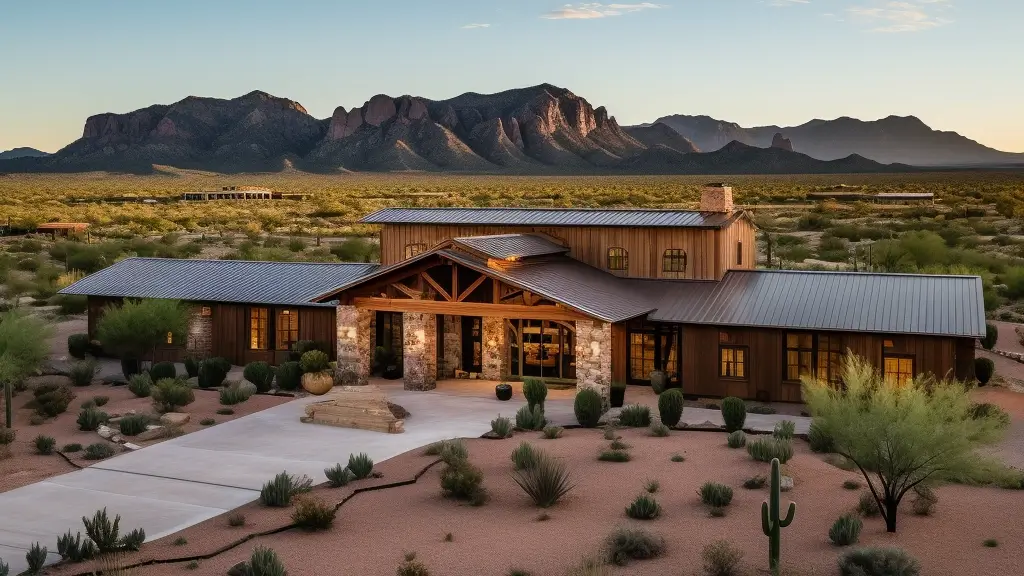Trusted Barndominium Builder: Personalized Develops Tailored to Your Demands
Trusted Barndominium Builder: Personalized Develops Tailored to Your Demands
Blog Article
Barndominiums Vs. Traditional Residences: a Thorough Contrast of Way Of Life and Functionality
The choice in between barndominiums and conventional homes encompasses different elements, consisting of lifestyle preferences and practical requirements. Barndominiums are defined by their open layouts and versatility, often appealing to those who prioritize common living and convenience.
Summary of Barndominiums
Barndominiums, a novel housing fad gaining popularity throughout various regions, mix the rustic appeal of barn-style style with the performance of modern-day home. These distinct structures typically are composed of a steel or timber framework, combining open floor strategies and high ceilings with energy-efficient attributes. Often located on expansive country residential or commercial properties, barndominiums supply homeowners the opportunity to take pleasure in a tranquil lifestyle while offering enough area for numerous tasks.
The convenience of barndominiums extends past their visual charm; they can offer as both living quarters and useful spaces for hobbies, workshops, or perhaps tiny companies. Their flexible layout allows for easy modification, fitting varied family requirements and choices. Numerous proprietors value the reduced upkeep demands related to steel house siding and roof covering, adding to lasting resilience.

Features of Typical Houses
Emphasizing classic layout and comfort, typical homes are identified by their unique architectural styles, which often show historic impacts and local looks. Typical attributes include balanced exteriors, gabled roofs, and an emphasis on craftsmanship, resulting in a cozy and welcoming environment.
Conventional homes frequently incorporate components such as crown molding, wainscoting, and wood flooring, enhancing their traditional allure. They typically feature multiple rooms with specified purposes, promoting family members interaction while permitting personal privacy. website. The design often consists of formal living and dining locations, which are conducive to entertaining guests and organizing family events
Outside products such as brick, wood, or rock are regularly used, adding to resilience and a sense of durability. Barndominium repair. Additionally, numerous traditional homes are made with front decks or stoops, promoting a feeling of neighborhood and link with the community
Landscape design plays a considerable function in traditional home design, with properly maintained gardens and paths that enhance visual appeal - visit website. Generally, standard homes symbolize a feeling of nostalgia and stability, interesting those who value heritage and an extra structured living atmosphere
Cost Contrast
Typically, a cost contrast in between barndominiums and standard homes exposes substantial distinctions in construction expenditures and overall investment. Barndominiums, commonly created from steel or steel structures, normally incur reduced material and labor expenses than traditional homes developed from timber and brick. The simplified style of barndominiums can translate to minimized building times, additionally lowering labor prices and speeding up tenancy.
Generally, the cost per square foot for a barndominium varies from $100 to $150, while traditional homes can differ commonly, usually falling in between $150 and $300 per square foot, relying on place, materials, and design intricacy. This price variation makes barndominiums an appealing option for budget-conscious customers looking for bigger space without compromising top quality.
In addition, barndominiums may cause long-term cost savings via reduced maintenance prices, power performance, and insurance coverage prices. Their resilient building and construction materials commonly call for much less upkeep with time contrasted to traditional homes. It is vital to take into consideration that while initial costs might be reduced for barndominiums, the final financial investment will likewise depend on specific modification and desired amenities, which can affect the total expense in both housing kinds.
Lifestyle and Area Factors To Consider
When considering way of living and room, barndominiums use an one-of-a-kind flexibility that interest a selection of home owners. These hybrid frameworks combine household living with useful room, commonly featuring open layout that can be adjusted to suit specific requirements. This flexibility is particularly useful for families or individuals looking for an individualized living atmosphere, enabling varied uses such as home offices, workshops, or leisure areas.

Moreover, the aesthetic charm of barndominiums can provide to both rustic and modern preferences, making them a flexible option for numerous design preferences (Barndominium repair). Ultimately, the option in between a barndominium and a typical home commonly depends upon how well each alternative aligns with the house owner's way of living desires and spatial requirements, highlighting the relevance of taking into consideration individual concerns in the decision-making process
Environmental Effect and Sustainability
The ecological impact and sustainability of barndominiums existing compelling advantages compared to conventional homes. Mostly built from steel and other resilient materials, barndominiums are often built utilizing recycled sources, decreasing the need for new materials and lessening waste. Their layout usually emphasizes open spaces, which can cause reduced energy intake for cooling and heating contrasted to conventional homes with even more fractional layouts.
In addition, barndominiums can incorporate lasting functions such as photovoltaic panels, rain harvesting systems, and progressed insulation strategies, boosting their energy performance. The flexibility of their style permits home owners to integrate these technologies much more perfectly than in lots of standard homes, which might require extensive retrofitting.
Additionally, barndominiums usually call her latest blog for fewer resources for building and construction because of their simpler, a lot more efficient designs. This not just decreases the carbon impact related to structure yet likewise adds to an extra lasting way of life. In comparison, conventional homes may include higher degrees of power expenditure and resource make use of throughout their lifecycle, from building and construction to upkeep. Generally, barndominiums stand for a forward-thinking technique to sustainable living, lining up with contemporary environmental priorities.
Final Thought
In summary, the choice between barndominiums and conventional homes pivots on individual lifestyle preferences and practical demands. Barndominiums, with their open formats and lasting products, cater to those looking for versatility and communal living.
Report this page